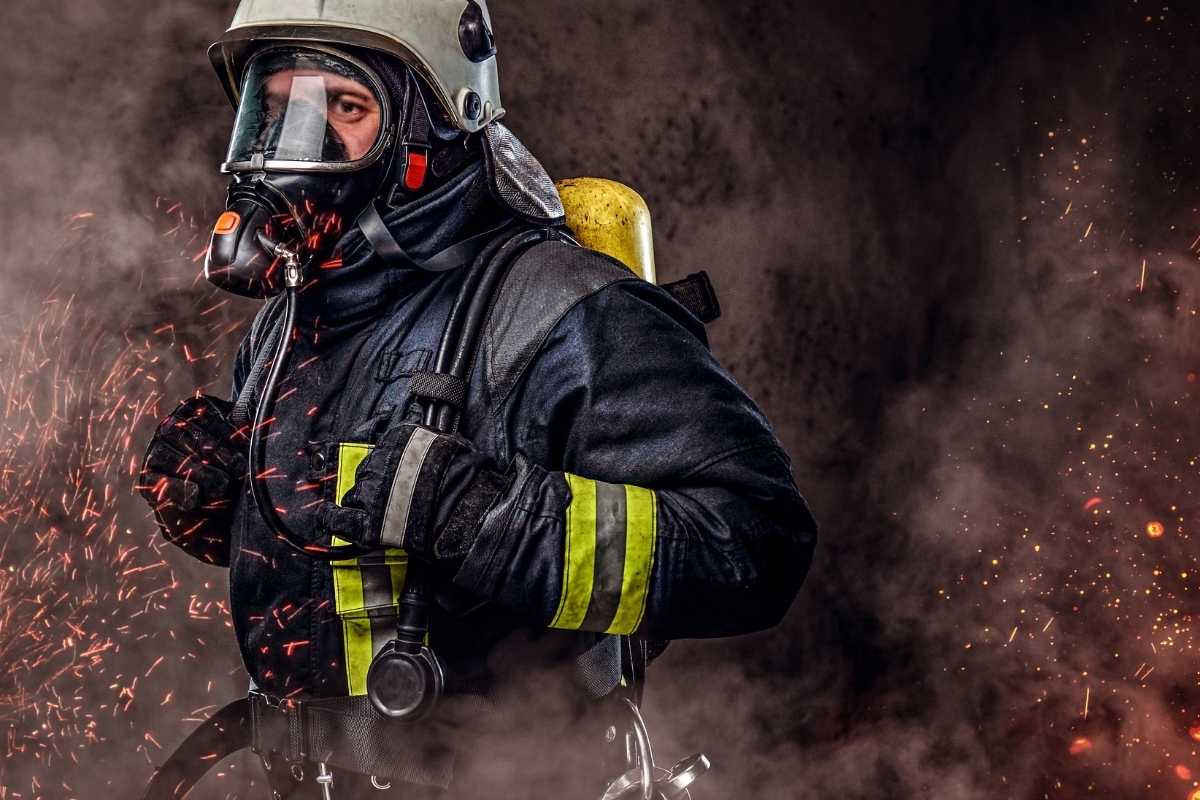To safely and effectively operate in hazardous atmospheres, breathing apparatus operators must be aware of the limitations of their breathing apparatus. These can include limitations of the wearer, the equipment and air supply.
Limitations of the Wearer
Several factors affect an operators ability to effectively use respiratory protection, these include the following:
- Physical Condition – operators must be in sound physical condition in order to maximise the work that can be performed and to extend the air supply.
- Agility – Wearing some respiratory protection restricts operator movement and can affect balance. Good agility will minimise these effects.
- Facial Features – The shape and contour of the face can affect the wearers ability to get a good face seal. Manufacturers recommendations prohibit wearing beards or facial hair that prevents a good seal between the face-piece and the wearers face.
- Motor Coordination – Good motor coordination is necessary for operating effective in breathing apparatus.
- Muscular-skeletal Condition – Operators must have the physical strength and size required to wear the breathing apparatus properly and the strength and stamina to perform effectively whilst wearing the equipment.
- Cardiovascular Conditioning – Good cardiovascular conditioning is needed to prevent heart attacks, strokes and other related problems during strenuous activities.
- Respiratory Functioning – Proper respiratory functioning will maximise the wearers operation time in a self-contained breathing apparatus (SCBA).
- Adequate Training in Equipment Use – Operators must be knowledgeable in every aspect of breathing apparatus use to ensure safety.
- Self-Confidence – Confidence in themselves and their abilities helps operators adapt to changing conditions that sometimes occur when wearing breathing apparatus.
- Emotional Stability – The ability to maintain control in claustrophobic and stressful environments will reduce the chance of serious mistakes being made.
Limitations of Equipment
In addition to being concerned about the limitations of the wearer, operators must also be aware of the limitations of the equipment:
- Limited Visibility – The face-piece can reduce peripheral vision and face-piece fogging can reduce overall vision.
- Decreased Ability To Communicate – Unless it has built-in voice amplification, the face-piece can seriously hinder voice communication.
- Increased Weight – Some types of breathing apparatus can weigh as much as 11-20kg (depending on the model).
- Decreased Mobility – The increase in weight and the restrictions caused by the harness straps can reduce the wearers mobility.
Limitations of Air Supply
Air supply is another factor to consider when assessing breathing apparatus limitations. Some limitations are based on the wearer whereas others are based on on the actual supply of air in the cylinder:
- Physical Condition of User – Those in poor physical condition expend their air supply faster than others performing the same task.
- Degree of Physical Exertion – The greater the physical exertion, the faster the air supply will be expended. This can result in a 30-minute air supply only lasting 15-minutes under actual working conditions.
- Emotional Stability of User – Operators who become excited increase their respiratory rate and use their air supply faster than operators who remain calm.
- Condition of Apparatus – Minor leaks and poor adjustment result in excess loss of air.
- Cylinder Pressure Before Use – If the cylinder is not filled to capacity, the amount of working time is reduced proportionately.
- Training and Experience of User – Properly trained and highly experienced operators are able to draw the maximum air supply from a cylinder.
For this and additional breathing apparatus information you can have your staff attend one of our Breathing Apparatus courses.
If you would like to know more or would like our assistance in the areas mentioned check us out at www.intrinsicsafety.com.au. Alternately, call us on 1300 990 336 or email us at [email protected]



